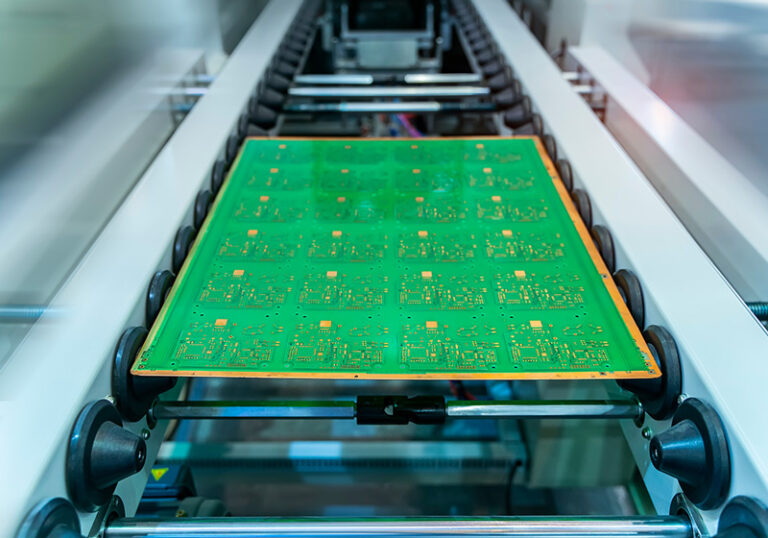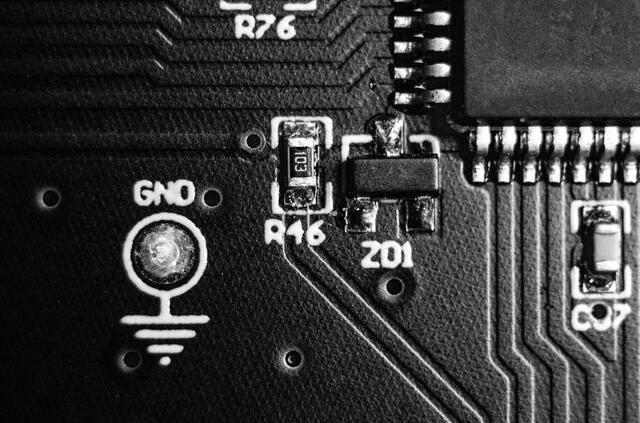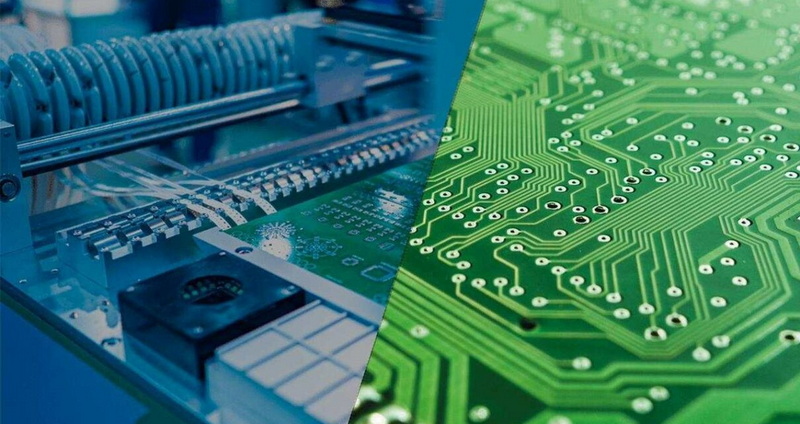Content Menu
● Understanding SMT Technology
● Key Components of an SMT Line
● Detailed Breakdown of Each Component
>> 1. Loader
>> 2. Stencil Printer
>> 3. Pick and Place Machine
>> 4. Solder Paste Inspection (SPI) Machine
>> 5. Reflow Oven
>> 6. Cooling System
>> 7. Automatic Optical Inspection (AOI) Machine
>> 8. Unloader
● Additional Components in Advanced SMT Lines
● Types of SMT Assembly Lines
● Benefits of Using an SMT Line
● Challenges in Implementing an SMT Line
● Conclusion
● FAQ
>> 1. What is Surface Mount Technology (SMT)?
>> 2. How does a pick-and-place machine work?
>> 3. What is the purpose of a reflow oven?
>> 4. Why is Automatic Optical Inspection (AOI) important?
>> 5. What are some advantages of using an SMT line over traditional methods?
● Citations:
Surface Mount Technology (SMT) has revolutionized the electronics manufacturing industry by allowing for the efficient assembly of electronic components onto printed circuit boards (PCBs). An SMT machine line consists of various interconnected machines that work together to streamline the production process. This article will explore the key components of an SMT machine line, their functions, and how they contribute to the overall efficiency and effectiveness of PCB assembly.

Understanding SMT Technology
SMT is a method for mounting electronic components directly onto the surface of PCBs, eliminating the need for drilling holes as required in traditional through-hole technology. This innovation allows for a higher density of components on a board, leading to smaller and lighter devices. The SMT process involves several stages, each requiring specialized equipment to ensure precision and reliability.
Key Components of an SMT Line
An SMT line typically includes the following key components:
- Loader: This machine feeds PCBs into the production line, ensuring a continuous flow of materials.
- Stencil Printer: The stencil printer applies solder paste to the PCB pads using a stencil. This step is crucial as it ensures that solder paste is deposited only where components will be placed, optimizing adhesion during soldering.
- Pick and Place Machine: Often considered the heart of an SMT line, this machine accurately picks up components from feeders or trays and places them onto the solder-pasted PCBs. Advanced models feature high-speed operation and vision systems for precise placement.
- Solder Paste Inspection (SPI) Machine: After solder paste is applied, the SPI machine checks its thickness, area, and volume distribution to ensure quality before component placement.
- Reflow Oven: This oven melts the solder paste to create permanent connections between components and PCBs. It uses controlled heating profiles to ensure optimal soldering conditions.
- Cooling System: After soldering, PCBs pass through a cooling system that solidifies the solder joints.
- Automatic Optical Inspection (AOI) Machine: AOI machines inspect PCBs for defects both before and after soldering. They utilize advanced imaging technology to detect misalignments or missing components.
- Unloader: This component removes finished PCBs from the line for further processing or inspection.
Detailed Breakdown of Each Component
1. Loader
The loader is responsible for automatically placing PCBs into the production line. It enhances efficiency by minimizing manual handling and ensuring that boards are fed into subsequent machines without delay. Modern loaders are equipped with sensors that can detect PCB dimensions and adjust accordingly, maintaining a smooth workflow.
2. Stencil Printer
The stencil printer is essential for applying solder paste accurately. It uses a stencil with openings corresponding to PCB pad layouts, allowing for precise application of solder paste. This step is critical as it sets the foundation for reliable component placement and soldering. High-precision printers can reduce waste by ensuring optimal paste coverage.
3. Pick and Place Machine
The pick-and-place machine is arguably the most vital piece of equipment in an SMT line. It uses robotic arms equipped with suction or mechanical grippers to pick components from feeders or trays and place them onto the PCB pads with high accuracy. The integration of vision systems allows these machines to adjust placements in real-time, ensuring high-quality assembly. Some advanced models can handle multiple component sizes simultaneously, increasing flexibility in production.
4. Solder Paste Inspection (SPI) Machine
The SPI machine plays a crucial role in quality control by inspecting the printed solder paste before component placement. It measures parameters such as thickness, area coverage, and volume distribution, allowing manufacturers to identify any issues early in the process. By catching potential problems at this stage, manufacturers can significantly reduce defects later in production.
5. Reflow Oven
The reflow oven is critical for creating strong electrical connections between components and PCBs. It heats up to melt the solder paste, which then cools down to form solid connections. Different types of reflow ovens exist, including hot air reflow ovens and infrared reflow ovens, each suited for specific applications. The reflow process typically involves several stages: preheating, soaking, reflowing (where solder melts), and cooling.

6. Cooling System
Once soldering is complete, PCBs move through a cooling system that rapidly cools down the boards to solidify the solder joints effectively. This step is essential for maintaining joint integrity and preventing thermal shock.
7. Automatic Optical Inspection (AOI) Machine
The AOI machine conducts visual inspections at various stages of production to ensure that all components are correctly placed and that there are no defects in solder joints. By using high-resolution cameras and sophisticated software algorithms, AOI systems can detect even minor discrepancies that might affect performance.
8. Unloader
Finally, the unloader removes completed PCBs from the SMT line for further inspection or packaging. This component ensures that finished products are handled efficiently without additional manual intervention.
Additional Components in Advanced SMT Lines
In addition to the primary components mentioned above, modern SMT lines may include several advanced features:
- Conveyor Systems: These systems facilitate smooth movement of PCBs between different machines in an SMT line, ensuring continuous flow without bottlenecks.
- Cleaning Machines: After reflow soldering, some lines incorporate cleaning machines that remove flux residues or other contaminants from PCBs before inspection or packaging.
- X-ray Inspection Systems: For more complex assemblies involving hidden joints (like BGA packages), X-ray inspection systems provide non-destructive testing capabilities to ensure quality control.
- Docking Stations: These stations allow for manual inspections or adjustments between automated processes without interrupting production flow.
Types of SMT Assembly Lines
SMT assembly lines can vary significantly based on their configuration and intended application:
- Single-Lane SMT Assembly Line: Ideal for small to medium-scale manufacturing operations with a single conveyor belt moving PCBs through each stage sequentially.
- Dual-Lane SMT Assembly Line: Designed for higher throughput needs; it features two parallel conveyor belts allowing simultaneous processing of two PCBs at once.
- Inline SMT Assembly Line: Offers high automation levels with equipment arranged linearly for seamless production flow; often used in high-volume manufacturing environments.
- Prototype SMT Assembly Line: Tailored for developing new products; these lines emphasize flexibility and precision during testing phases before scaling up production.
Benefits of Using an SMT Line
Implementing an SMT line offers numerous advantages over traditional PCB assembly methods:
- Higher Component Density: SMT allows more components to be placed on a PCB due to its compact nature.
- Reduced Manufacturing Costs: Automation reduces labor costs while increasing throughput.
- Improved Reliability: The precision offered by automated machines results in fewer defects and higher quality products.
- Flexibility: Modern SMT lines can quickly adapt to different product designs with minimal downtime.
- Enhanced Performance: Shorter interconnection lengths improve electrical performance by reducing parasitic effects.
- Lower Material Waste: With precise application techniques like stencil printing, less material is wasted compared to traditional methods.
- Faster Production Cycles: Automation speeds up processes significantly compared to manual assembly techniques.
Challenges in Implementing an SMT Line
While there are many benefits associated with SMT lines, manufacturers may face challenges such as:
- Initial Investment Costs: Setting up an automated SMT line requires significant capital investment in machinery and technology.
- Complexity in Setup: Configuring an efficient production line requires careful planning and expertise.
- Training Needs: Operators must be trained on new technologies and machinery to ensure optimal performance.
- Maintenance Requirements: Automated systems require regular maintenance to prevent downtime due to equipment failure.
Conclusion
In conclusion, an SMT machine line comprises several key components that work together seamlessly to produce high-quality electronic assemblies efficiently. From loaders and stencil printers to pick-and-place machines and reflow ovens, each piece of equipment plays a vital role in ensuring precision and reliability throughout the manufacturing process. As technology continues to advance, SMT lines will likely become even more efficient and capable of meeting the ever-growing demands of modern electronics manufacturing.

FAQ
1. What is Surface Mount Technology (SMT)?
Surface Mount Technology (SMT) refers to a method for mounting electronic components directly onto printed circuit boards (PCBs) without drilling holes, allowing for higher component density and smaller device sizes.
2. How does a pick-and-place machine work?
A pick-and-place machine uses robotic arms equipped with suction or mechanical grippers to accurately pick electronic components from feeders or trays and place them onto pre-applied solder paste on PCBs.
3. What is the purpose of a reflow oven?
The reflow oven melts solder paste applied on PCBs during assembly, creating permanent electrical connections between surface mount components and their respective pads on the board.
4. Why is Automatic Optical Inspection (AOI) important?
AOI is crucial for quality control as it inspects PCBs before and after soldering for defects such as misaligned or missing components, ensuring high-quality production standards.
5. What are some advantages of using an SMT line over traditional methods?
SMT lines offer benefits such as higher component density on PCBs, reduced manufacturing costs due to automation, improved reliability through precision assembly, flexibility in adapting to different designs, and enhanced electrical performance due to shorter interconnections.
Citations:
[1] https://www.smtpark.com/what-are-the-key-components-of-a-smt-line.html
[2] https://www.pcbasic.com/blog/smt_production_line.html
[3] https://emsginc.com/resources/the-evolution-of-surface-mount-technology/
[4] https://www.quick-pcba.com/the-main-equipment-in-an-smt-line/
[5] https://www.wevolver.com/article/smt-process
[6] https://www.lioncircuits.com/blog/posts/what-is-surface-mount-technology
[7] https://yellowtommy.com/blogs/an-exhaustive-guide-to-smt-machines
[8] https://minearc.com/what-is-an-smt-line/
[9] https://pactech.com/advanced-packaging-equipment/smt-machines-for-electronical-component-assembly-on-pcbs/
[10] https://www.smtfactory.com/The-Key-Components-of-An-Efficient-SMT-Production-Line-for-PCB-Assembly-id48363586.html




















